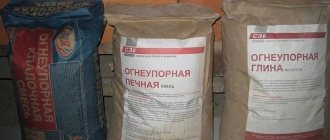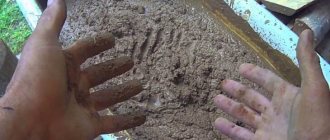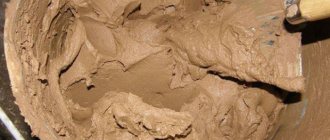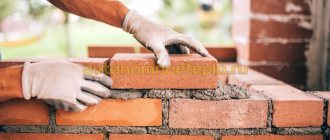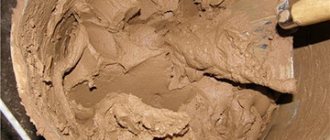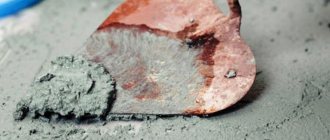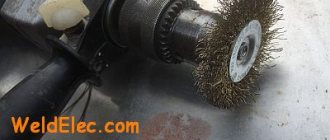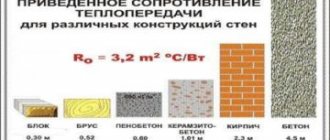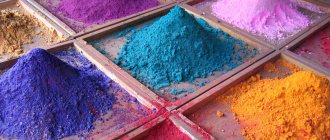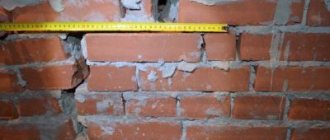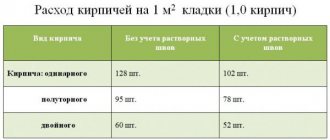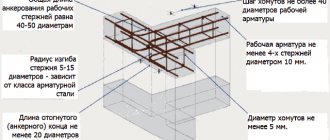Perlite is granules of volcanic lava, resulting from rapid cooling upon contact with soil and water. Thermal conductivity coefficient of perlite λ = 0.045 to 0.059 W/(m²·K). The melting point is from 950 to 1300°C, and the beginning of softening or sticking is 850°C.
Perlite is chemically inert, non-flammable, hygroscopic and has a constant volume. It is characterized by resistance to frost, moisture and various types of pests, and has excellent thermal insulation and sound insulation properties. High porosity combined with low weight and a relatively low price make perlite a very attractive material for construction.
Perlite: application for home insulation
Perlite is granules of volcanic lava, resulting from rapid cooling upon contact with soil and water. Thermal conductivity coefficient of perlite λ = 0.045 to 0.059 W/(m²·K). The melting point is from 950 to 1300°C, and the beginning of softening or sticking is 850°C.
Perlite is chemically inert, non-flammable, hygroscopic and has a constant volume. It is characterized by resistance to frost, moisture and various types of pests, and has excellent thermal insulation and sound insulation properties. High porosity combined with low weight and a relatively low price make perlite a very attractive material for construction.
Surface preparation
Before starting work with a warm solution, the work surface should be cleaned of efflorescence, grease, paint, fats and any other substances that reduce adhesion to the mixture.
There are two ways to check surface moisture:
Please note that surfaces with large defects must first be repaired. To do this, you can use M200 masonry mortar. If the material is lightweight or cellular concrete, then you just need to moisten the surface generously.
Application of perlite
- the main component of light gypsum plasters, heat-insulating masonry and plaster mortars;
- weight-reducing additive improves the performance and plasticity of gypsum plasters, cement-lime masonry mortars and tile adhesives;
- the main thermal insulation material in heat-insulating masonry mortars and heat-insulating plasters performed on the construction site.
- the main component of heat-protective perlite concrete self-leveling floors. You can make such by mixing 3 parts of perlite, cement and water in the required proportions. Do-it-yourself perlite concrete can be used to fill the floor or plaster the ceiling. At the same time, you can solve problems with surface unevenness by refusing to use polystyrene foam boards;
- a component that reduces the weight of gypsum castings and concrete elements. Used to reduce the weight of various façade tiles, precast concrete structures, plaster casts or decorative concrete elements, window sills;
- loose backfill for thermal insulation of walls and ceilings;
- main component of perlite concrete insulating slabs;
- perlite of class “0” as a component giving the “pearl” effect in decorative paints, as well as classes I and II for the “Raufazer” effect;
- As a powder or in the form of perlite concrete, it is used as a supplement or replacement for expanded polystyrene in floors and ceilings.
- Perlite, depending on the skill of handling it, is used as an addition to classical insulating materials, or as the main material used for insulating floors and attics.
Expanded perlite sand, practical in all respects
Perhaps even earlier we should have mentioned such a property of perlite as non-flammability. And this is not surprising if you consider how expanded perlite sand is produced. It is made from volcanic glass by high-temperature (over 1000 degrees) firing, similar to basalt tiles, which have a similar origin.
Perlite-based refractory bricks are used for lining work, that is, for lining blast furnaces in the metallurgical industry. It is the remarkable fire-resistant properties of perlite that make it possible to obtain excellent heat-resistant building mixtures with its help.
The perlite filler in the plaster mortar can reduce its thermal conductivity by 50%, while 3 centimeters of the resulting finishing material will correspond to 15 centimeters of brick in terms of thermal insulation properties.
Perlite can be used as insulation not only in thermal insulation products, but also in its natural, bulk form. The best option is to fill the cavity between the load-bearing wall and the facing masonry, laid out with an indentation of 3-4 centimeters. The cavity is filled every 4 layers of brick, and perlite is poured in layers, followed by light tamping, which should lead to shrinkage by 10%. You can pour perlite directly from bags or using a sandblasting machine.
Perlite concrete
From the point of view of thermal insulation and sound insulation, it is one of the best building materials. Perlite concrete can be used for insulating floors, ceilings, pouring walls, ceilings, and roofs. By mixing the components appropriately, you can obtain various perlite concretes.
In many cases, it can be used instead of polystyrene foam - there is no need for labor-intensive operations of insulating floors with foam plastic and then pouring screed. It can also be used when laying heated floors.
Preparation of masonry mixture
When preparing the solution, two key factors must be taken into account:
- Relative air humidity in the workspace.
- Working surface humidity.
In accordance with these indicators, from 1.6 to 1.9 liters of water are used per 10 kg of solution. The warm masonry mixture is added to the water gradually. The resulting solution must be continuously mixed with a drill at low speed or a specialized construction mixer.
The finished composition should be kept for 10 minutes, after which it will be ready for use within an hour and a half. It is recommended to maintain the solution temperature at a level of at least 10 Co (15 Co if the wind speed is more than 6 m/s).
Perlite proportions for concrete mortar
| Perlite concrete recipe | Material ratio, cement: class III perlite: water | For a 25 kg bag of cement, add a bag of perlite (class III) with a volume of 0.1 m³ + liters of water | Bulk density [kg/m³] | Compressive strength [Mpa] | |
| 14/4,0 | 1:4:1,25 | 1 + 31,3 | 840 | 3,8 | 0,097 |
| 14/5,5 | 1:4:1,00 | 1 + 25,0 | 920 | 6,4 | 0,078 |
| 16/3,8 | 1:6:1,84 | 1,5 + 46,0 | 670 | 3,2 | 0,110 |
| 16/4,5 | 1:6:1,56 | 1,5 + 39,0 | 740 | 4,2 | 0,087 |
| 16/5,2 | 1:6:1,35 | 1,5 + 33,8 | 800 | 4,9 | 0,073 |
| 18/5,0 | 1:8:1,80 | 2 + 45,0 | 710 | 4,8 | 0,066 |
| 110/5,5 | 1:10:2,0 | 2,5 + 50,0 | 590 | 3,4 | 0,070 |
Other possibilities for industrial use of perlite concrete:
- casting foundations for equipment operating in extreme temperature conditions - from -200 to +800ºC,
- production of reinforced concrete structures, chimneys, energy and refrigeration units,
- production of single-layer panels for the construction of external sandwich-type walls,
- production of floors for bathrooms, dressing rooms, swimming pool insulation.
Thermal insulating (warm) masonry mortar with perlite for laying ceramic blocks.
THERMAL INSULATING MASONRY SYSTEMS BASED ON PERLITE
THERMAL INSULATING MASONRY SOLUTIONS
| THERMAL INSULATING MASONRY SOLUTIONS WITH PERLITE | |||
| PEREL | QUICK-MIX | HAGAst | TERTA |
| TKS-8020 | LM-21P | LT-240 | TEPLOMAX |
| price: 310 rub. | price: 441 rub. | price: 275 rub. | price: 300 rub. |
The natural mineral perlite, which is the main raw material for the production of expanded perlite sand, is a water-containing volcanic glass with small concentric shell-like inclusions
It is usually mined by open-pit mining. Crushed ore undergoes heat treatment in high-temperature furnaces (900-110 0°C). The water contained in the rock quickly evaporates and is removed from the rock. At the moment of softening, the steam swells it and a multiple increase in volume occurs (from 5 to 20 times). Expanded perlite is white or gray grains with closed air pores. Grain size ranges from 0.1 to 5.0 mm. The density of perlite sand is 100-250 kg/m3, dry thermal conductivity is 0.046-0.071 W/mK, porosity is up to 90%.
Expanded perlite sand is a heat-insulating material that is particularly lightweight and is used as insulation both in its pure form and in heat -efficient products: heat-insulating plasters and heat-insulating masonry mortars for ceramic blocks . The unique properties of expanded perlite have led to the widespread use of this material in industry and construction. Perlite sand is used as a filler in lightweight concrete, in the production of building materials: mortars for masonry made from heat-insulating ceramic blocks, warm plasters, building mixtures. Used as backfill for insulating walls, floors, and ceilings.
Heat and sound insulating plaster solutions based on expanded perlite sand, binder and various additives (mineral, asbestos, cellulose, waste from natural silk and cotton) have become widespread. To reinforce the perlite solution, cellulose and glass fibers 10 mm long are used in an amount of 5 - 10% of the mass of the solution. This is the optimal fiber length at which the samples have the greatest strength. With a longer length, mixing the solution is difficult, its homogeneity is disrupted, which negatively affects the strength properties.
The most promising use of warm perlite plasters is in individual construction. A layer of such plaster 3 cm thick in its thermal insulation properties is equivalent to 15 cm of brickwork. The plaster is applied to brick, concrete, slag concrete, metal mesh, wood and can be painted or wallpapered without any additional work. It can be used to insulate both heated and cold rooms.
lightweight heat-insulating masonry mixtures based on expanded perlite are also widely used ; they fill cavities in walls, blocks, bricks, and grout seams and cracks. Such a heat-insulating mortar is most optimal when building from lightweight heat-efficient bricks, ceramic bricks and blocks or foam concrete, the properties of which are close in their thermal parameters to the characteristics of heat-insulating mortar for masonry. Brickwork made from such thermal insulation mortars does not have cold bridges.
Perlite sand is successfully used in thermal insulation backfills of sloping roofs, walls and floors of buildings. This makes it possible to reduce the thickness of the thermal insulation backfill by 2-3 times compared to expanded clay, which is widely used in Russia, while expanded perlite sand does not emit any harmful substances - it is environmentally friendly, non-flammable, does not age, and does not harbor pests.
Perlite is poured into the cavity between the sheathing and roof sheathing and compacted approximately 10%. When making the bottom covering layer from clapboard, a waterproof layer of glassine or film is laid over it. The joints of the structure with gutters, as well as the places where ventilation and smoke ducts pass through the roof, are hermetically sealed with sealing and adhesive tape. The most preferred material used when insulating sloping roofs is bituminized perlite. Perlite particles, pre-treated with bitumen in the factory, become sticky when a solvent is added to it. This allows you to create extremely durable insulating layers of any configuration directly during work. This insulation combines well with bituminized cover layers and insulation boards and does not require heating before installation. To install insulated monolithic floors with asphalt or other hard coating, hydrophobized expanded perlite sand with a particle size of up to 6 mm and a bulk density of about 95 kg/m3 is used. Expanded perlite sand from bags is poured onto the base and distributed by leveling slats so that the thickness of the sand layer exceeds the required thickness by 20%. The minimum laying thickness is 10 mm
To insulate the walls of buildings, perlite sand with a bulk bulk mass of 60-100 kg/m3 is used. The cavity between the load-bearing and facing masonry is filled in layers after laying 3-4 rows of bricks. The backfilled layer is compacted to avoid shrinkage during operation. Waterproofing gaskets are placed at working breaks in the insulation. Perlite backfills are used to insulate walls made of wooden structures. Such insulating layers are non-flammable and therefore increase the fire resistance of buildings. The largest amount of expanded perlite in world practice is used in molded thermal insulation products (about 60%). In this case, various products are used as a binding material: cement, gypsum, bitumen, liquid glass, etc. The production of these products is distinguished from other known technologies by the low humidity of the molding mass (25-35%). This makes it possible to organize their production using rolling-conveyor technology and make production virtually waste-free. In addition, the reduced humidity of the molding mass of these products reduces the energy consumption for their heat treatment by 25-30%. All these materials are environmentally friendly and fireproof. They do not contain organic compounds and can be used both for insulating hot surfaces and for fireproof and fire-resistant building insulation.
Low initial humidity allows the sintering process to be carried out in one stage using conveyor technology for 1.5-2 hours at a temperature of 500°C. Below is a description of certain types of molded thermal insulation products produced by domestic manufacturers. Perlite cement slabs. This material belongs to the group of non-combustible materials and can be used for fire protection of steel, reinforced concrete and wooden building structures. They are also used for thermal insulation of building structures of residential, public and industrial buildings and structures; for thermal insulation of industrial equipment at temperatures of the insulated surface up to 600oC, including boilers.
BITUMOPERLITE: It is a heat-, steam-, and waterproofing material obtained by mixing expanded perlite sand and bitumen. Bitumen perlite is used for insulation and waterproofing of combined roofs, industrial refrigerators and other technological equipment operating at temperatures from -50°C to +150°C. Modified bitumen perlite, for example with phenol-formaldehyde resin, becomes more heat-resistant (180-1900°C) and can be used for insulation of heating networks. Material density 300-450 kg/m3, thermal conductivity 0.08-0.11 W/mK, bending strength 0.15-0.20 MPa, humidity no more than 2.5%, daily water absorption no more than 5%.
CARBOPERLITE: It is obtained by semi-dry pressing of a mass consisting of expanded perlite and lime (ratio 1:8-1:10), subsequent treatment of the mixture with gases containing carbon dioxide. Products have a density of 200-350 kg/m3; thermal conductivity (at 25°C and 700°C) 0.065-0.09 and 0.137-0.162 W/mK; bending strength 0.15-0.30 MPa; compressive strength 0.3-0.8 MPa. Carboperlite products can be used for thermal insulation of the surfaces of energy, technological equipment and pipelines with an insulated surface temperature of up to 650°C.
GYPSOPERLITE: Gypsum perlite thermal insulation products are made on the basis of building gypsum and expanded perlite with a density of 80-150 kg/m3 using casting, vibration and semi-dry pressing methods. With a gypsum/perlite ratio of 1:7/1:8, thermal insulation products with a density of 300-400 kg/m3 and a compressive strength of 0.15-0.5 MPa can be obtained. Gypsum perlite products are recommended for thermal insulation of surfaces of energy and technological equipment, gas and steam pipelines at temperatures not exceeding 600°C.
GLASS PERLITE: For production, expanded perlite sand with a density of 80-150 kg/m3 and liquid glass with a density of 1250-1350 kg/m3 are used. Heat treatment of the mixture is carried out at a temperature of 300-400°C. Physical and technical indicators: density 180-300 kg/m3, compressive strength 0.3-1.2 MPa, bending strength - 0.2-0.7 MPa, thermal conductivity at 200°C - 0.064-0.09 W /mK. The maximum application temperature is 600-700°C.
PLASTERLITE: It is produced on the basis of urea-formaldehyde and coumaron resins, which give them strength, sufficient water resistance and low water absorption. Plastic perlite thermal insulation boards have the following physical and mechanical properties: density 250-280 kg/m3, compressive strength 0.6-0.8 MPa, daily water absorption 3.3-3.5%, thermal conductivity 0.065-0.07 W/mK. Currently in Russia, no more than 20% of the produced expanded perlite is used for construction. Perlite is rarely used to insulate walls, roofs, and ceilings. Meanwhile, in light of increasing requirements for thermal protection of buildings, this material is very promising. Factories producing expanded perlite have retained their production potential and can today supply builders with any required quantity of perlite of the required quality.
Site material: NEW CHEMICAL TECHNOLOGIES (Analytical portal of the chemical industry) www.newchemistry.ru
Thermal insulating perlite plasters
Plasters in which sand is replaced with perlite retain their properties. They are lightweight and perfectly insulate thermally and acoustically. They can be used indoors and outdoors. Perlite plaster is permeable to vapors and gases, allows the wall to breathe, and is also non-flammable. Perlite is also one of the two main specialty aggregates used in restoration plasters on antique walls to remove moisture and soluble salts that cause corrosion.
One centimeter layer of perlite plaster, from the point of view of thermal insulation, replaces: 0.5 cm of polystyrene foam, 5 cm of brick or 8 cm of traditional sand-based plaster. Plaster used on both sides of the wall doubles this effect. Using, for example: a layer of 6 cm on the outside, and 3 cm on the inside replaces 4.5 cm of polystyrene foam or 45 cm of brick or 56 cm of traditional sand plaster. If the layer of perlite plaster is thicker than 6 cm, then it is necessary to use a plaster mesh. Perlite plaster can be painted with acrylic or other paint. As for gypsum perlite plasters, increasing the proportion of gypsum volume in them improves the strength characteristics. For a plaster thickness of 18 cm, a volume of 500 kg/m³ (gypsum/perlite ratio is 1:1), the strength parameters are 1.25 MPa (compression) and 0.57 MPa (bending), for a mass of 700 kg/m³ (gypsum/perlite up to 3:1) strength parameters 2.97 MPa (compression): 1.73 MPa (bending). With thin layers, the strength parameters are higher. With a layer thickness of 14 cm and 700 kg/m³ of solution, the compressive strength is 4.61 MPa and the tensile strength is 2.03 MPa. For 500 kg/m³, respectively 2.19 MPa (compression): 0.91 MPa (bending).
Additional density reduction
The average density of the binder composition, as mentioned above, is reduced by the use of low-density fillers. However, a reduction in the density of the mixture can be achieved with the presence of a traditional filler - sand. When using turbulent mixers and air-entraining additives, the density can be reduced from 1600 to 900 kg/m 3, which corresponds to a strength of 0.3-4.9 MPa. This mixture corresponds to brands M4, M10, M25.
One of the ways to reduce the density of building mixtures is to prepare the solution using special mixing equipment - a steam generator. A good effect can be achieved by porous cement stone using turbulent mixers. This technology is applicable only with the use of air-entraining additives.
The most effective method of preparing a warm solution is the simultaneous use of porous aggregates and air-entraining additives.
The choice of the type of porous aggregate depends on the composition of the raw material base, operating conditions, and the average density of the wall material. Traditional aggregates must have a density of 800 to 500 kg/m3 and have a strength of up to 10 MPa.
Composition of the solution
Plasters with perlite have good heat-saving qualities. The mixture for plaster, which includes perlite, consists of 3 groups of ingredients:
- Actually perlite filler, i.e. porous material with heat and sound insulation properties.
- A binding base, which is usually gypsum, cement, lime, or a combination of these.
- Polymer additives to improve various additional properties.
Perlite is a volcanic rock, an acidic glass.
Perlite plaster uses the properties of the material to expand when heated up to 20 times. Under the influence of high temperature, the sand is filled with a large number of air bubbles, which creates a high level of thermal insulation. Perlite is added to mixtures to produce lightweight concrete.
Characteristics and main properties
It has long been known from school physics courses that air is a poor conductor of heat. Based on this, a logical conclusion suggests itself: in order for a building structure made of porous materials to retain heat well, the solution must contain “air-absorbing” substances. Most often, such fillers are perlite or expanded clay sand.
External wall structures are often made of lightweight materials with a high coefficient of thermal resistance. In this case, a mixture of lower density than traditional cement-sand mixture is required as a binding material. The latter has a high density (up to 1800 kg/m3), resulting in additional heat loss due to “cold bridges”. If the density of the binder “dough” exceeds the density of the wall material for every 100 kg/m3, then the heat loss of such a structure increases by 1%.
If the density of the binder “dough” exceeds the density of the wall material for every 100 kg/m3, then the heat loss of such a structure increases by 1%.
In order for this physical characteristic of the binder mixture and the wall material to be comparable, it is necessary to prepare a special “warm” solution, the density of which would be 500-800 kg/m 3. This composition must have high ductility, crack resistance, good adhesion, moisture-holding abilities, and sufficient viability.
The strength of a building structure largely depends on the wall material, and not on the brand of the composition. The brand of the latter, as a rule, must coincide with the technical characteristics of the brick. However, when using a mixture of one grade lower, the reduction in masonry strength drops by only 10-15%.
Minimum grades of mortars (from M10 to M50) are used for buildings of the 1st degree of durability, as well as for masonry of low-rise buildings made of highly porous materials, the strength of which is 3.5-5 MPa. Thus, for this type of building, binder mixtures with a strength of 1 to 5 MPa should be used.
Valuable question.
The cost of perlite plaster per sq.m varies depending on the brand and weight of the packaged mixture. The price ranges from approximately 215 to 230 rubles per 15 kg bag. Gypsum perlite plaster is usually sold packaged in 30 kilograms for about 300 rubles.
If a layer of perlite is laid out five centimeters thick, the consumption per “square” is about 8.5 kilograms. That is, you need to pay about 100 - 150 rubles per m². Prices per square meter vary for different types and brands of perlite. Costs are also determined by the thickness of the final coating that is planned to be made. You can buy perlite plaster in regular finishing materials stores, and you can also order it online on the website. data-matched-content-ui-type=”image_stacked” data-matched-content-rows-num=”2″ data-matched-content-columns-num=”3″ data-ad-format=”autorelaxed”>
Material consumption
In preparation for plastering work, the need for basic materials is calculated. If the walls are smooth, the calculation is carried out only on their total area, the consumption rate per layer 10 mm high for an area of 1 sq.m, as well as the coating thickness accepted for insulation. The consumption varies for different ready-made SS (dry mixes). On average, approximately 9 kg/m2. When calculating the total volume of prepared mixtures, the resulting total is increased by the amount of unaccounted expenses (in reserve).
If the walls are uneven and require adjustment, then the volume of coating is calculated for each wall by determining the average layer thickness. To do this, 2–3 beacons are placed in one vertical plane (the surface of the future coating). The layer thickness (minimum and maximum) is measured at two to three points along each beacon. The measured values are summed up and divided by the number of measurements. By multiplying the resulting thickness by the area of the wall, the volume of the coating is obtained.
Properties of “warm” plaster
Perlite warm plaster is distinguished by a whole set of features, thanks to which the material is widely in demand for interior work and facade finishing of buildings.
The advantages of the mixture include:
| № | Coating property | Characteristics of perlite plaster |
| 1 | Thermal insulation | The composition includes materials with a low thermal conductivity coefficient. A 5 cm layer is equivalent in terms of insulation strength to a wall of 2 bricks or 4 cm of mineral insulation material. |
| 2 | Fire safety | The solution does not support combustion, does not contribute to the spread of fire, and belongs to the NG class. |
| 3 | Environmental Safety | No harmful substances were released. Compared to other thermal insulation materials, the harmful impact on the external environment is practically zero. |
| 4 | Biological resistance | The plaster environment is not suitable for the growth of mold, fungi or bacteria. |
| 5 | Adhesion | High level of adhesion to any type of base: concrete, brick, various blocks. |
Perlite in building mixtures
Perlite (grades M75 or M100) is used as a component in dry mixtures (cement- and gypsum-perlite), significantly improving their properties. Application of ready-made dry perlite mixtures: for plastering work; for leveling surfaces, that is, arranging self-leveling floors.
The solution is prepared very simply: water is added to the finished dry mixture in the proportion indicated on the package. Compared to conventional plaster, perlite plaster has more effective thermal insulation (a layer of such plaster 3 cm thick in its thermal insulation properties can be equated to 15 cm thick brickwork), sound insulation, fire resistance (about 5-10 times higher), high vapor permeability, frost resistance and resistance to rotting. It is suitable for both internal and external work.
DIY cooking
For self-preparation you will need: cement, water, perlite (sand) and plasticizer. The mass fraction of the last component does not exceed 1%; a readily available plasticizer is water-soluble PVA glue. Slaked lime is often used; a little more is added to the mixture.
Step-by-step cooking instructions:
- First, lime milk is made. To do this, lime is mixed with water in a large container; for this purpose it is convenient to use cut-off 200-liter barrels or metal baths. The ratio is 1 kg of powder per 10 liters of water. The solution is allowed to stand for 10-12 hours so that all unburned lumps of lime dissolve. The total volume of liquid is calculated so that it is enough to mix the plaster on the next working day.
- A plasticizer is added to the lime mortar: PVA glue or dishwashing detergent - 1% of the expected mass of cement.
- A cement-perlite mixture is being prepared. The proportions are as follows: cement - 1 part, sand - 1, perlite - 5.
- A standard 280-liter concrete mixer is suitable for mixing the solution. Loading proportions: 4 shovels of sand, 4 cement, 4 lime and 20 perlite.
- After the first mixing, the solution is allowed to stand for 15 minutes and mixed again.
Description
Thermal insulating mixture brand M200 from VosCemProduct LLC is the optimal choice for laying energy-saving walls. The mixture is popular at construction sites in the Central Federal District and northern regions of the Russian Federation. This warm solution is a combination of several components that provide high performance characteristics of the mixture.
The product contains:
- Portland cement M500 D0 (CEMI 42.5) GOST 31108-2003
- perlite sand (expanded perlite);
- purified polyfractional quartz sand up to 0.63 mm;
- hydrophobic additive;
- mineral plasticizer;
- dispersion powders;
- blowing agent and special astringent additives.
Warm masonry mixture is easy to use and suitable for laying external fences, installing blocks and panels, repair work, laying tiles and other tasks. The maintained level of heat transfer is ensured by the structure of the masonry joint. Other advantages of the warm solution include: high adhesive strength, compression strength, frost resistance, and water resistance.
Scope of application
Adding additives will help prevent excessive moisture absorption. Plaster with perlite is used in finishing buildings for various purposes, indoors and outdoors, and when pouring screed on floors. It fits perfectly on any base: concrete, brick, foam block, metal, wood. To get rid of increased hygroscopicity, various additives and additives are used in solutions.
Facade work is carried out using solutions in which lime is the binder. When cement and ordinary quartz sand are added to the solution, the mixture can be used to form a strip foundation for lightweight structures.
Plaster with expanded perlite can be made using cement or gypsum. Cement-perlite mortar can be used for finishing interior spaces and facades, gypsum perlite mortar can be used only inside the house, excluding the bathroom and toilet. A mixture with cement is more often used, since its application outside brings more benefits.
There are ready-made dry perlite mixtures on sale: Quick-mix MPL, Perel Teplorob, Glims Velur, HAGAST, ExtraGips Iso.
Examples of cement-perlite mixtures
However, they are not found on sale very often, so craftsmen usually purchase the necessary materials themselves and mix a solution based on them.
Features of construction from arbolite blocks
You can build a building from wood concrete not only for residential use. Very often this material with organic filler is used for the construction of walls :
- basements;
- garages;
- baths
Each type of structure has its own masonry features.
Cellar
The basement is used for household needs: winter supplies or items needed in everyday life are often stored in it. For the cellar, it is important to ensure that there is no moisture, since if the basement walls are covered with condensation, this moisture will soon seep into the main part of the house.
There are several features of constructing a cellar from wood concrete:
- it is allowed to build a cellar under a ready-made house by making a excavation in the ground: in this case, it is necessary to conduct a study and find out whether the cellar will affect the integrity of the house:
- the pit is dug manually, without the use of machinery;
- first the floor is installed, then the walls;
- when constructing walls made of wood concrete for a cellar, 2 holes for ventilation pipes must be provided;
- waterproofing is applied to the walls made of wood concrete and the soil around them, more often - roofing felt.
Cellar walls made of wood concrete blocks can be treated with lime mortar or antiseptic. If desired, they can be plastered.
Garage
A garage should be a secure structure in which a vehicle can be safely stored. The building must also be fireproof and made in such a way that the car owner can conveniently operate his vehicle: leave, drive in and carry out maintenance.
When constructing walls for a garage from wood concrete, the owner receives a monolithic wall from which not a single block can be knocked out, which ensures safety.
Several features of building a garage from this material:
if there is a hole in the garage, then before installing it you need to check the groundwater level;- walls made of wood concrete must be waterproofed;
- be sure to design a garage before construction;
- when building from wood concrete, there is no point in making a deep foundation for a garage, so a strip foundation is sufficient;
- the platform for the car can be made of concrete or paving slabs;
- a depth of 1 meter will be enough for a trench for a garage;
- masonry, as in other cases, begins from the corners and the horizontal lines are constantly checked.
During the work, the installation of an opening beam will be required. It is often made of reinforced concrete, but such a design will place excessive stress on the wood concrete. Instead, it is better to use the blocks themselves, having previously tied them with reinforcement.
Bath
Wood concrete is the best material for building a bathhouse. during the construction process , thanks to which craftsmen choose this particular material :
- the warmth and fire safety of the bath will be ensured due to the composition of the blocks;
- it is better to use monolithic technology: such a bath will be warmer;
- the components of the adhesive mixture must be prepared before starting all work;
- It’s better to work with two or three people;
- if the bathhouse is small, then you can do without a team of workers and do everything on your own;
- It is better not to use homemade wood concrete blocks.
Many experts insist on building a bathhouse from monolithic wood concrete, but if the technology and rules are followed, block material can also be used for construction.
All the nuances of building a bathhouse from arbolite blocks are here.
Mix the solution
You can prepare the composition for the solution yourself, or you can purchase a ready-made dry mixture. The purchased version guarantees the correct proportions. Plus, plasticizers and additives are added at the factory, which are difficult to mix privately. The mixture should be diluted with water strictly according to the instructions.
The solution from one package should be prepared in full to ensure that the ingredients are mixed in the correct proportions. Mix until a smooth, homogeneous mass is obtained without dense inclusions.
Use time is limited to a maximum of 3 hours, after which the solution will begin to harden.
PVA can be added in an amount of 1% of the total mass. It will be more economical to prepare the mixture for the solution yourself. The solution is not complicated: 1 part cement, 4 parts filler, water until the required density of the solution is obtained. PVA glue can be used as a plasticizer. The additive should be somewhere around 1% of the total volume. Step by step mixing instructions:
- dissolve glue in water;
- mix sand and cement into a homogeneous mixture;
- Pour water into the dry mixture until the required thickness of the composition;
- let the mixture brew for about 15 minutes, mix thoroughly again.
An example of calculating the amount of mixture: 1 m3 - perlite, 375 kg - cement, 4.5 liters - PVA glue, about 300 liters of water.
Optimal composition that provides optimal properties.
Due to the fact that special fillers and additives are introduced into the composition of the dry masonry mixture, it obtains properties such as plasticity and low thermal conductivity, comparable to the thermal conductivity of the porous blocks themselves. Thanks to perlite, which is included in the mixture along with foam glass, the solution acquires low weight, special plasticity and ease of processing.
Thermal insulating masonry mortar with perlite Quick-Mix LM 21P guarantees uniform high thermal insulation of the wall without the formation of cold bridges without the use of additional thermal insulation materials. Using a porous block with a thickness of 45-51 cm and laying it on a warm masonry mortar, you will no longer need to make an external insulation contour using mineral wool insulation.
You can buy Quick-Mix LM-P from our company, both with delivery throughout Moscow and the region, and with delivery to transport companies for shipment to Russian regions. If you wish, you can pick it up yourself from a warehouse in Moscow or Noginsk.
Expanded perlite
Perlite, as a rock, is practically not used in construction. It acquires its unique properties only as a result of heat treatment, namely, heating at temperatures from 900 to 1100 degrees Celsius. At the same time, it swells, increases in size by 5–15 times and breaks up into small, round particles, which are called expanded perlite. Heat treatment is carried out in 1÷2 stages: it all depends on the amount of water in obsidian hydroxide. If its content is high, at the first stage, excess liquid is removed, keeping the material at temperatures of 300÷400˚C.
Foamed perlite is powder (particles less than 0.14 mm in size), sand (fraction size less than 5 mm) or crushed stone (granules 5÷20 mm in size). The density of sand is 50÷200 kg/mᶟ, and crushed stone is about 500 kg/mᶟ. The color varies from snow-white to grayish-white.
Thermal insulation boards made of perlite
Thermal insulation boards, which contain perlite sand and various binders (bitumen, lime, polymer compounds, cement, gypsum, clay, liquid glass), are manufactured by hydraulic pressing.
For normal positive and low negative temperatures, including areas of deep cold, perlite-bitumen products, such as slabs, are used.
The composition of perlite-bitumen slabs, which are used for thermal insulation of building structures and roofs of industrial buildings, includes perlite sand, bitumen, clay, asbestos, glue, sulfite-yeast mash (SYB) and water. Such perlite blocks can withstand temperature changes from -60 to +100 degrees Celsius and are divided into low-flammable (bitumen content is 9%) and low-flammable (bitumen content is 10÷15%).
The main advantages of insulating perlite slabs: low weight, high sound and heat insulation characteristics; resistance to rotting; resistance to deformation and mechanical stress.
Plastering the walls
Perlite plaster requires preparation of the wall surface.
This is where the complexity of the work ends. To apply plaster to a wooden base, you need to nail shingles to the wall or install a reinforcing mesh. In all other cases, it is enough to clean the walls from dirt, dust and old finishes and moisten them with water. If you want to achieve better adhesion, it is better to treat concrete and brick walls with a deep penetration primer in several layers. Before carrying out finishing work, cracks, if any, must first be repaired.
Plastering work is carried out at temperatures above 50C. At lower values, the result may be of poor quality.
The solution is applied to the surface manually or mechanically and then leveled. The layer can be from 5 to 50 mm; if a more massive coating is required, application is carried out in several layers. For more information on preparing warm plaster, watch this video:
Trim the solution at the moment when it has set. After a couple of hours, the surface can be glossed with grout. It is recommended to paint perlite plaster no earlier than after 2 – 3 days. The solution will gain maximum strength 4 weeks after application. The layer will reach its peak thermal insulation 2 months after drying.
Avoiding the main mistakes
Simple recommendations will help you correctly perform plastering work with perlite composition:
- When mixing the solution, the rotation speed of the mortar mixer or mixing attachment should be no more than 600 rpm.
- The preparation of the base should be done carefully. The adhesion of the coating and the base, durability, strength, and appearance depend on its quality.
- To prevent the solution from becoming too liquid, the entire recommended volume of water should not be added. Water is added little by little after the perlite begins to release it.
- One of the mistakes is covering expansion joints with a plaster coating - the coating must be made with a seam repeating its geometry. The seam itself in the plaster coating is subsequently filled with a sealant with a polyurethane base.
- To ensure that the proportions of the components are maintained, the entire volume of CC from the packaging is used in the batch.
Additional information about the material in the video:
To retain heat in the house and reduce the load on the walls and foundation, perlite plaster is widely used. The environmentally friendly composition made from natural materials does not require special skills; even a non-specialist can perform the finishing.
Application Features
A perlite-based plaster composition is applied to a surface previously prepared in the usual way: it is cleaned and primed. Features:
- For wooden surfaces, it is necessary to fill the shingles so that the solution adheres better to the flooring.
- Before applying the finish to brick or concrete, the working surface is generously moistened with water;
- Porous surfaces with high absorbency must be coated with special primers in several layers so that the wall does not draw out all the liquid from the working solution.
The plaster is applied in the usual way with a spatula and trowel, and the layer is leveled using the rule. After 2 hours, you can make the surface smooth using a sponge soaked in water.
The coating can be painted after 3 days. Branded strength gain occurs on the 28th day (cement hardening time).
Tools
To work with the mixture you will need a metal spatula and a trowel. The composition is thrown onto the surface, and to level it you should use a grater and a rule. Only the final layer needs to be leveled if it is necessary to apply the plaster in several approaches.
When only one layer is applied, the material is leveled immediately. If you have to work with a large surface area, it is better to use the machine method, as the quality of work improves and the speed of application increases.
With my own hands.
You can make perlite plaster yourself. To do this you will need cement, perlite, water and a plasticizer. One part of cement is taken. Filler – four parts. Water is added until the desired consistency is obtained. Plasticizing additives, such as PVA glue, make up about one percent of the mixture. You can buy perlite and cement in the store. And as a plasticizer it is allowed to use ordinary water-soluble PVA glue.
- First, the glue must be diluted in a small amount of water.
- Then mix cement and perlite.
- Then add water to them, gradually pouring it in until you get a mass - thick, but at the same time plastic.
- The mixture should be allowed to brew for about fifteen minutes.
- Mix the composition again.
For example, for one cubic meter of perlite you will need about 375 kilograms of cement, about three hundred liters of water and 4 - 5 liters of PVA glue.
Expert advice: for large volumes of finishing, homemade perlite plaster will cost less than a ready-made factory mixture. A ton of M500 cement costs three to four thousand rubles. A bag of slaked lime weighing twenty kilograms - 170 rubles. A cubic meter of perlite - from one and a half to two thousand rubles.
What you will need for construction: consumables and tools
In addition to the building material for the walls and the adhesive composition or cement-sand mortar that will be used to erect the structure, you will also need tools :
- building level;
- cord for installing plumb lines and beacons;
- spatula for applying glue;
- square;
- Master OK;
- drill with a nozzle for stirring glue;
- buckets - for water and for solution;
- ladle-trowel;
- chainsaw or hand saw, i.e. everything you can use to saw wood concrete blocks;
- roulette.
Using a building level and plumb lines, as well as beacons, the master checks the evenness of the masonry. For example, to lay out the first row, you need to pull the cord so that the stone is laid according to its line.
Then, using a building level, the evenness is checked again horizontally and vertically. To apply the glue, use a trowel or a wide spatula with teeth - it evenly distributes the mass over the stone. Using a square, they check the evenness of the corners, and a chainsaw is necessary so that you have something to cut the blocks with. A tape measure will also be useful, with which you can check the masonry diagram.
Small reinforcement mesh or metal reinforcement bars may also be useful. They are needed for reinforcing and strengthening walls.
